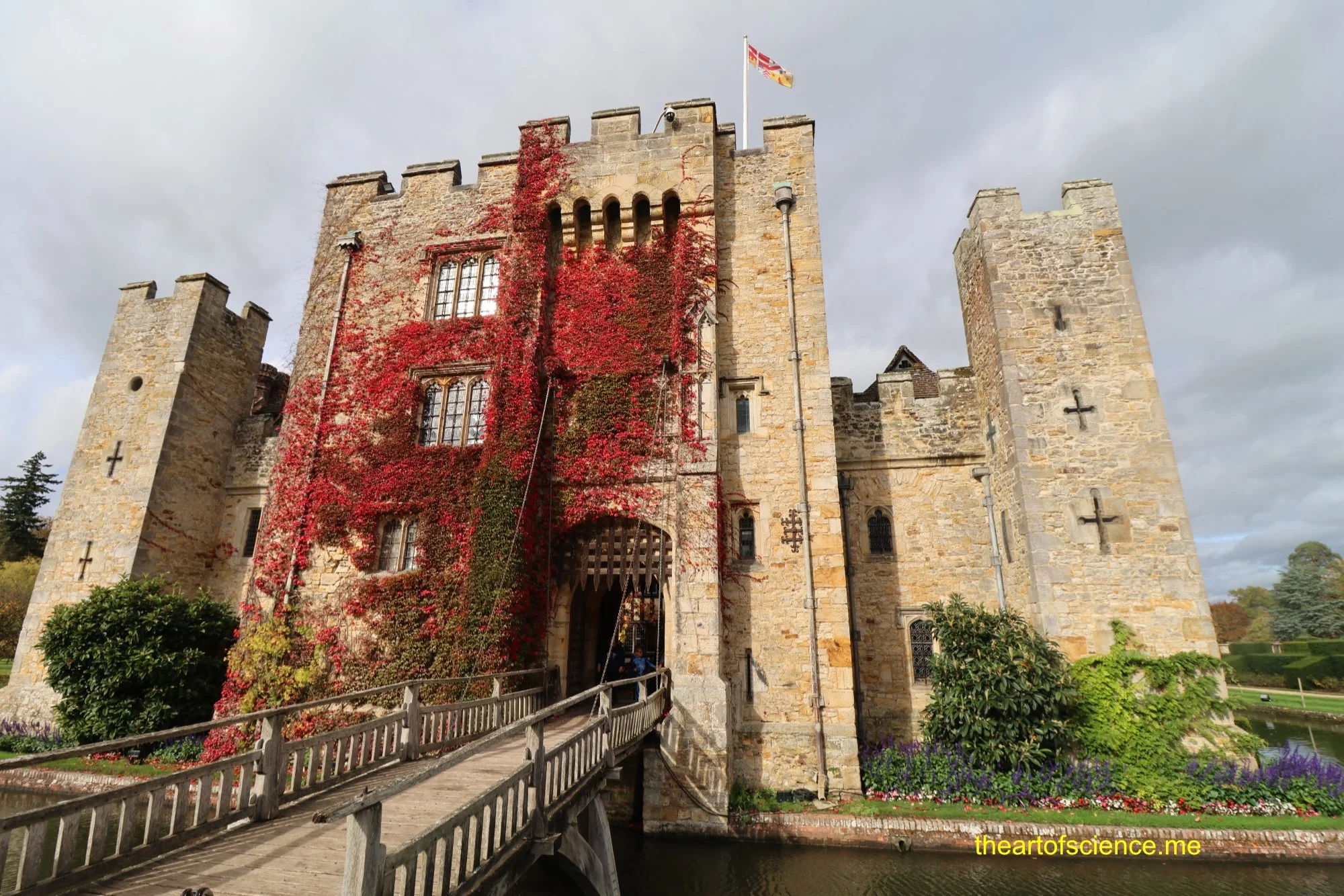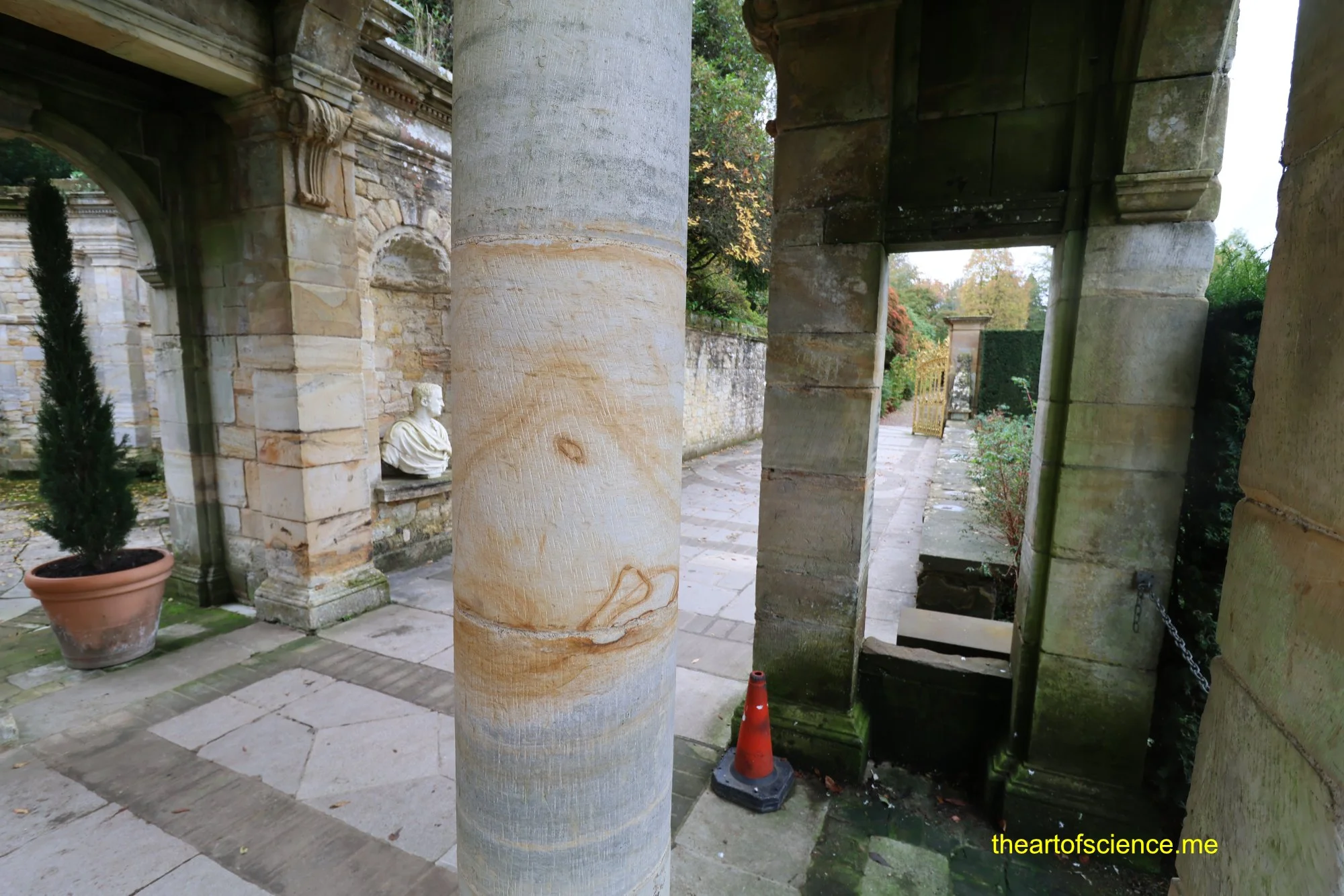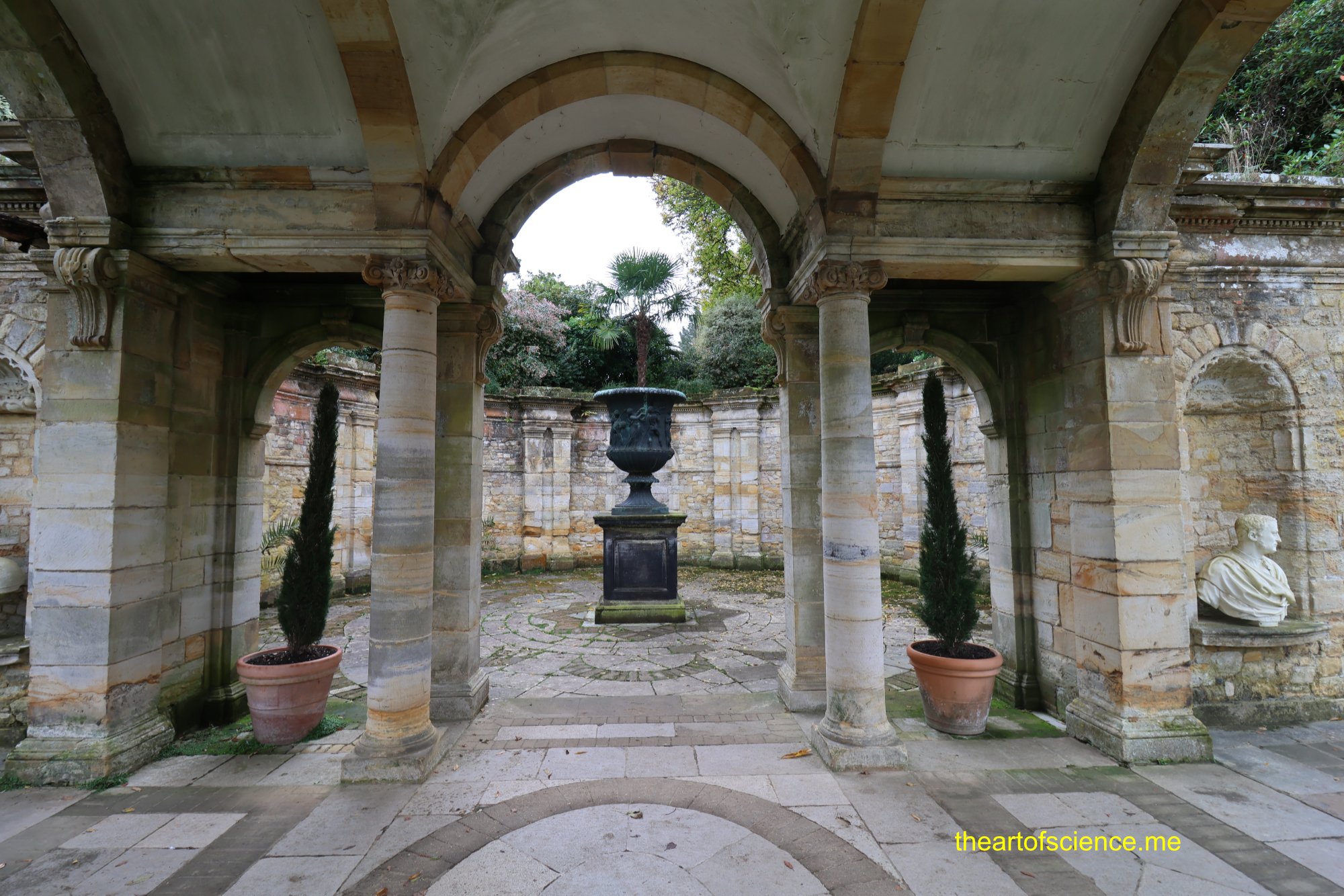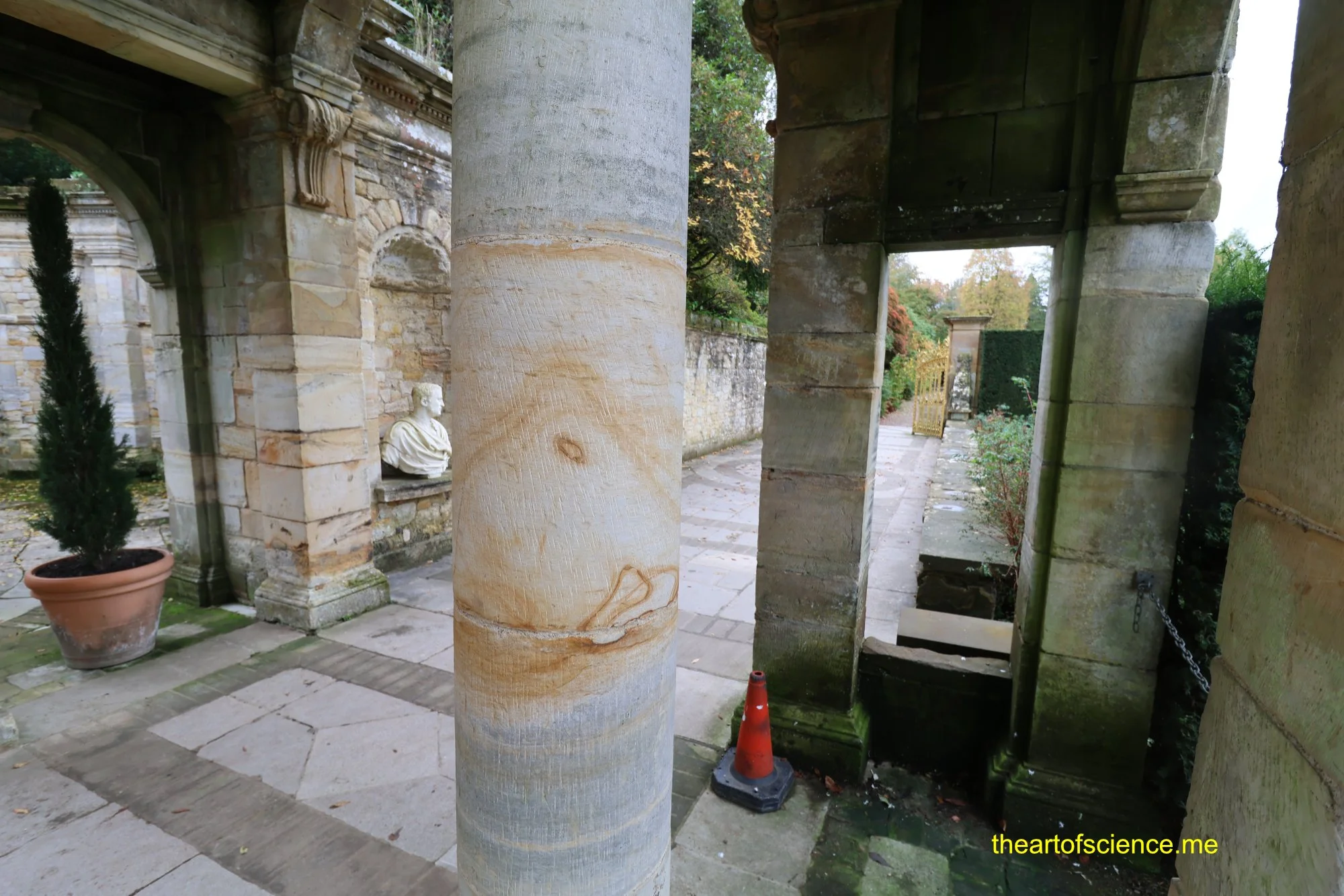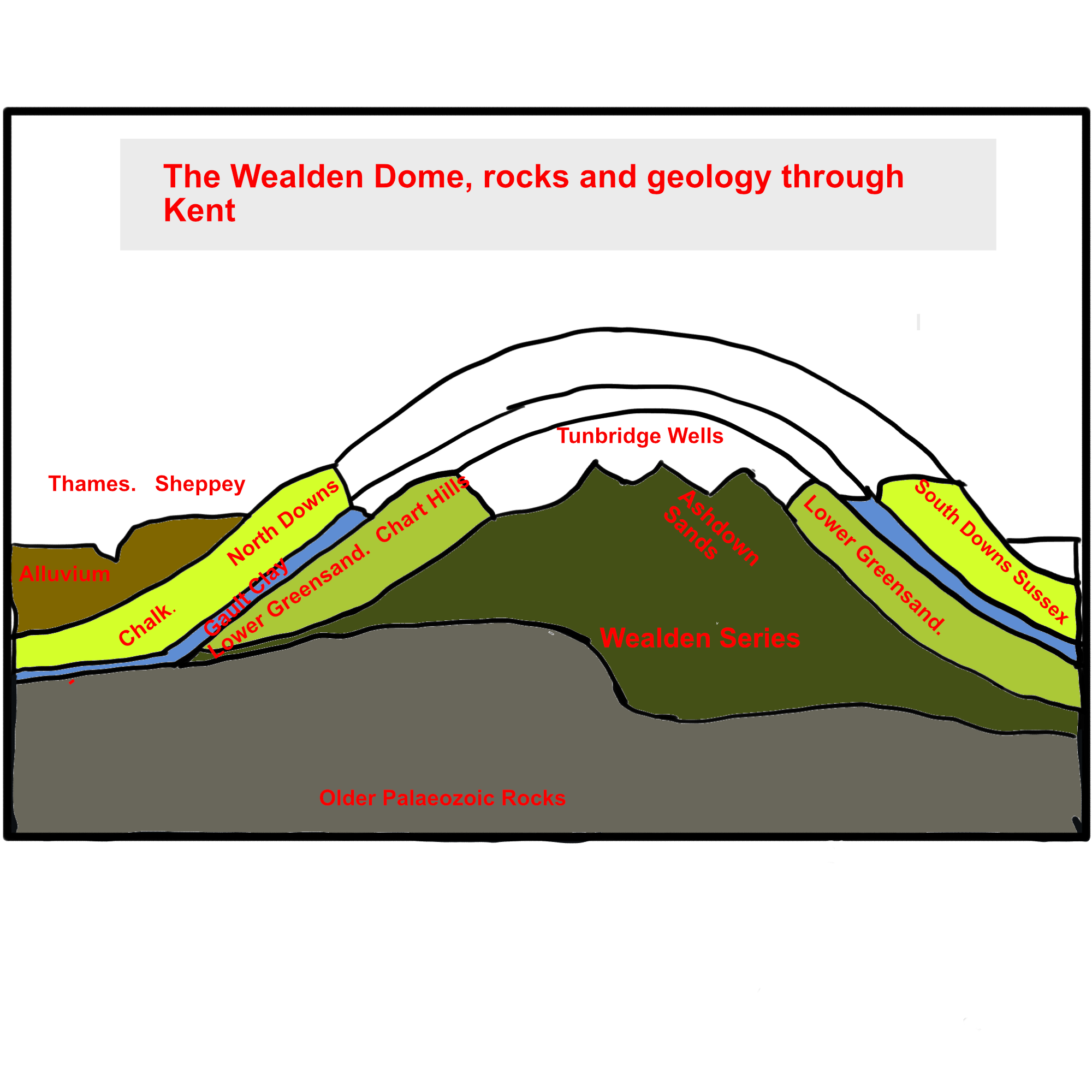Hever Castle
Work started on Hever Castle long before Henry and Anne dallied in residence. Off-site prefabrication was well underway during the early Cretaceous, 130 million years earlier.
Sandstones used in the construction of walls and pillars in the Italian Gardens contain a record of events from a distant past, far from their present location.
The Entrance.
Hever castle in late Anthropocene sunlight.
Sandstone Pillars and Walls of the Italian Gardens.
Beautifully cut sandstone pillars and walls with distinctive layered patterns in greys and reds.
Every rock has a story, every landscape has a history.
The garden pillars and walls are constructed from sandstone blocks cut from local quarries. Rocks that slowly eroded to form this sandstone probably originated close to the tropics. They hitched a ride to Kent on a piece of Pangea before it began fracturing in the early Cretaceous .
New Zealand sits on top of a plate boundary and every now and again we feel the pacific plate move. I think Kent has stopped moving, it isn’t going anywhere since it left Europe.
The Cretaceous colour palette.
Iron compounds saturate the sandstone adding colour to the grey.
Layered patterns stand out in the sandstone, some with pencil-thin detailing. Orange and brown colours appear like brush strokes on a watercolour painting.
Daniel Smith produces a red ochre watercolour paint. It contains the same coloured mineral found in Ashdown sandstones. Tiny iron oxide granules, suspended in water with gum arabic, art and chemistry in the mix. Colour soaks into moist paper from the artist’s brush.
Fluids carrying minerals circulated and mixed in the porous medium of early Cretaceous sandstones. Oxygen, or a lack of it, can cause colour changes in iron compounds. Cretaceous water colours decorate the walls and pillars of the Italian Gardens.
Where did the minerals come from, how were they transported, and why do they change colour?
These are questions for another chapter.
Clay-forming phyllosilicate minerals trapped in the sandstone matrix retain a memory of events, as they travel through time and space. They help provide answers.
Turning the pages of history.
A page in Anne Boleyn’s life on display at Hever Castle. The Book of Hours.
Turning The Pages of Cretaceous History.
The book of Early Cretaceous times has opened in the Wealden Dome. The Ashdown sandstones of chapter 2 feature in the Italian Gardens.
Chapter 1. Palaeozoic rocks. Very old history.
Chapter 2. The Wealden Series. The Ashdown Sandstones appear half way through this chapter.
Chapter 3. The Lower Greensand story
Chapter 4. The Gault Clay. A short read.
Chapter 5. Chalk is plentiful.
Chapter 6. Alluvium. This is actually a prologue. Remains of the past, cast aside, are ready to be part of the next chapter when humans have decamped to Mars.
Disclaimer. This is a work of fiction based on scientific fact. I have tried to be accurate. Loved visiting Hever Castle.
I’ll add links to the academic articles i used for background information later.

